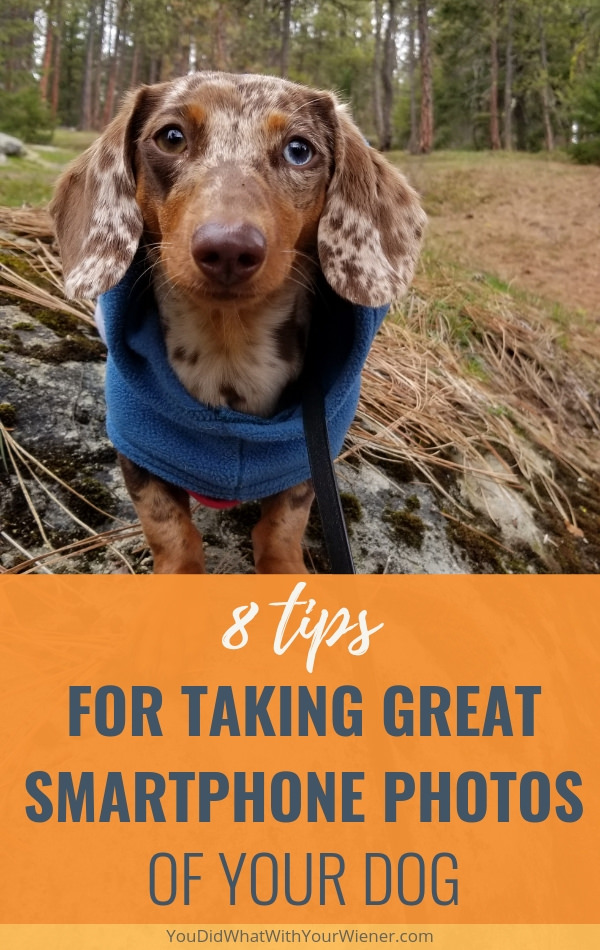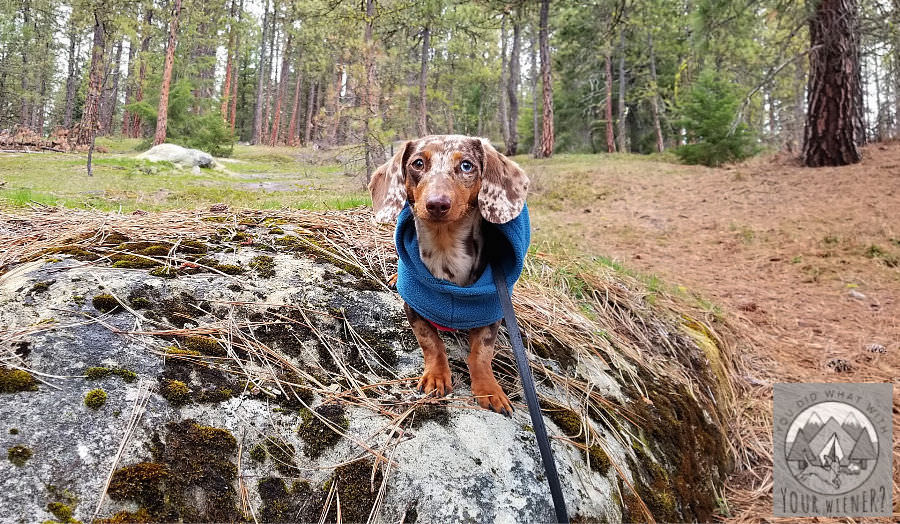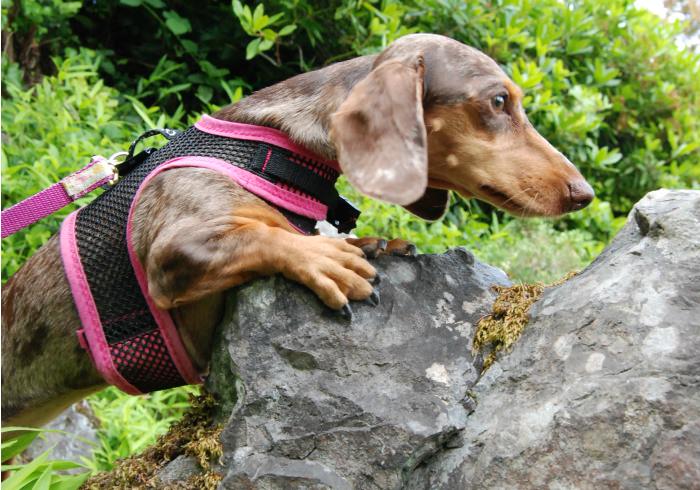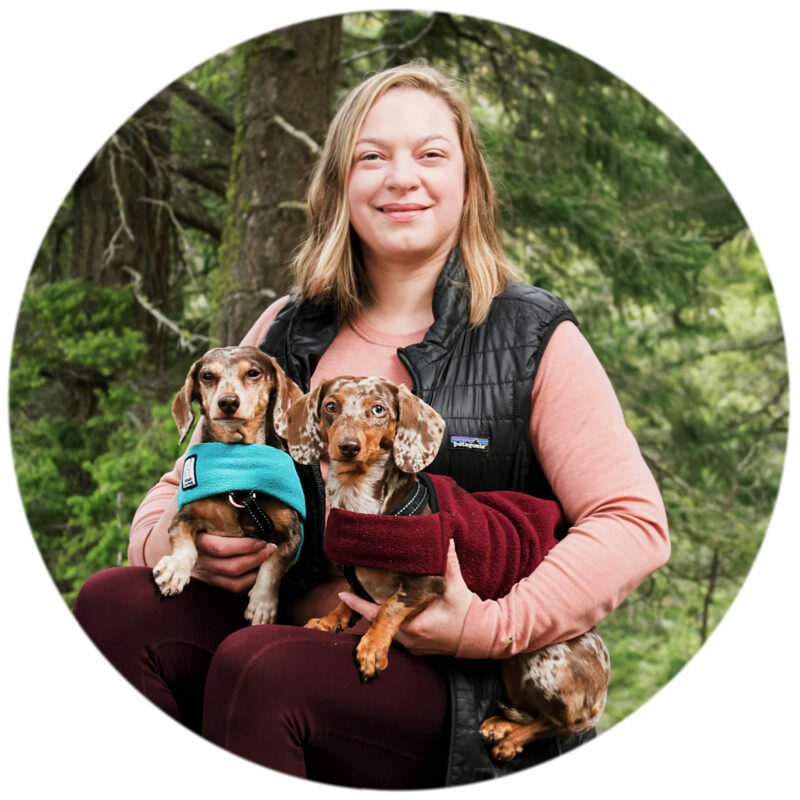8 Tips for Taking Great Dog Photos with Your Smartphone
When your dog is your constant hiking or travel companion, there will be a lot of opportunities to capture great photos of your dog.
The camera you are most likely to have on hand when you want to capture the moment – because it’s the only one you have or you forgot your “good camera” in the car – is your smartphone.
Unfortunately, it can be a little tricky to get an Instagram-worthy snap or high-quality dog pictures, with your phone camera.
The 8 Smartphone photo tips below will help.

Smartphone Photography Tips to Help You Get Your Dog’s Good Side
It’s pretty easy to get a photo of your dog with your smartphone today.
Cell phone camera technology has improved to the point that the quality of the camera in some smartphones rival that of point and shoots.
However, getting a non-blurry photo of your dog with the proper lighting still takes a bit of skill and proper technique.
Here are some photography tips that will help ensure your photos properly capture the moment.
1) Switch Off Your Smartphone’s Flash
Try to use natural light rather than flash when taking your photo (this will be easy when you are adventuring outdoors).
Not only will flash flatten the image, making it harder to capture the color variations in your pup’s hair, but it might also spook your dog and make them less willing to be photographed.
Using the flash will also often result in glowing red or green eyes as the light is reflected off the inside of your dog’s eye.
2) Give Your Dog a Focal Point
Dogs don’t know to look at the camera the way that we do.
When it comes to holding their attention, it can be helpful to give them a focal point such as treat or a spoonful of peanut butter.
Sometimes holding your fingers in a pinched position above the camera lens, whether you are actually holding a treat or not, will get your dog to look right at the camera.
3) Reward Your Dog for Posing and Sitting Still
When your dog does finally sit still for a photo or reacts well to the camera, reward them with a treat.
As with training, treats teach them that sitting for the camera is a desirable behavior.
If they are continually praised and rewarded for sitting still and looking at the camera, your dog is more likely to do it again in the future.

4) Don’t Forget to Capture Your Dog’s Personality
Try not to force your dog into an uncomfortable or unnatural position when taking the photo.
Not only will the dog drop out of uncomfortable positions more quickly, but naturally-posed pictures will better showcase your dog’s personality and be more fun for them.
Some of the best photos are taken by sitting in one place, letting your dog casually walk around or explore, and capturing the spontaneous moments.
5) Try Out Different Perspectives
Taking top-down pictures of your dog may be the most convenient – especially with small dogs – but it’s not always flattering.
To give your pup more dimension and personality, move around your dog.
Try to get on their level with your smartphone and play with different angles, such as getting really low or setting your small dog on something, and shooting upward.
And remember that not all great dog photos are ones where your dog is looking directly at the camera.
One of my favorite poses to capture is when my dog is sitting or standing and starting at something interesting in the distance.
Her face has so much personality and expression.

6) Give Your Dog Scale and Show Off Their Environment
It’s common to photograph a dog up close to emphasize their face.
While these photos are very endearing, they all tend to look similar.
To shake up the formula, give your pup scale by stepping back, making sure your camera is zoomed all the way out, and incorporating them into a larger landscape shot.
There is a happy medium too.
Instead of getting as close as you can to your dog, take just a couple steps back to incorporate a bit of their surrounding environment like a tent if you’re camping or a landmark when you’re traveling.
7) Explore Advanced Settings for Your Smartphone Camera
For most people, the auto settings of your phone camera is sufficient.
However, many smartphone cameras have a “professional, “pro”, or “advanced” mode in the settings that allow you to adjust for specific circumstances.
For example, if you’re trying to capture your dog in motion, increasing the shutter speed can help the photo not come out blurry.
If the lighting is very low, you can open up the aperture (lower number) to let in more light.
8) Use a Phone Application that Allows You to Edit Later
While the right settings can help produce a quality photos, the real magic often happens in the editing process.
To make your editing more powerful, if your camera has an option to do it, shoot photos in RAW format then use a smartphone app that allows you to edit a photo in RAW format later.
While RAW format photos won’t be immediately shareable – you’ll have to edit them first – doing this will produce higher-quality images.
You can also just shoot in normal Jpeg mode and fix small issues light lighting and exposure using a phone editing app like Snapseed.

Final Thoughts
High quality photos are for more than sharing with friends, family, and on social media.
Quality photos of your dog are also great ways of remembering moments and adventures with our favorite companions for years to come.
With the right settings and and techniques you can capture smartphone photos that rival those taken with a point and shoot camera.

About the Author
Hi, I’m Jessica. I’ve been studying the Dachshund breed since 2007, owned 3 of my own, and shared in the lives of thousands of others through their owner’s stories. When I’m not sharing what I know on this blog, you can find me hiking, camping, and traveling with my adventurous wiener dogs.

thank you for your full report on Dachshunds.. I adopted one from a resuce ( from Taiwan ) with bad skin disease, gum disease, and lenticular sclerosis who is very loving and sweet but has had all teeth except for 4 molars in back I have had him for 2 days now and after reading this , am not sure I can care for him properly as I have owned many dogsin my life, 3 pembroke welsh corgis, 2 samoyeds, cockapoo, lab and others..with no on going problems.. the cost of maintaining future problems with a dachshund to me is overwhelming…I have 7 more days to have him and must make up my mind or cannot return him for full $200 refund.. If it sounds like I am a cheap skate, so be it..But I am in my 80’s and am not wealthy..I am active socially and like out door walking and ltd hiking..My boy is 8 yrs old and 19 lbs of sweetness and peace…. But I am somewhat afraid of having inability to care for him properly if problems as you have described come along.. So I appreciate getting to know more about this breed..
all of his teeth removed… Taiwan sent dogs to USA and he was well taken care of by the Alternative Humane Society here in Bellingham WA dedicated foster mom. I am sorry i didnt not get this into the letter above.. before sending it…Nothing wrong with the rescue..but I did not know the problems I might be facing with this breed…
To follow up on your last comment and my reply… Dachshunds don’t necessarily have more problems than a lot of other breeds. Small dogs in general tend to have more teeth issues. Dachshunds ARE prone to back issues, and treatment can be costly, but corgis are also prone to the disease (not as much as Dachshunds too). Larger dogs, such as the German Shepherd, are prone to his displaysia, which can also be costly to treat. Really, owning a pet is a gamble financially. Some are healthy their whole lives and require few vet visits but some have many, or ongoing, issues that require a significant investment in time and money. It sounds like you adopted this dog knowing he had existing medical issues. As I suggested in my other comment, I would take to the rescue about your situation and see if they can find you a pet that would be a better match for you.
Hi Aleen. I’m not sure which article you were reading that caused you to double think your ability to care for this new Dachshund as the article you commented on is about taking photos of your dog.
It sounds like this pup has a lot going on medically. Dealing with those issues long-term can be costly no matter what breed the dog is. I commend you for taking in a rescue with health issues but, yes, perhaps it is good to re-evaluate him vs your financial situation. I would suggest speaking to the rescue about your situation. Perhaps they could find you a healthy dog that would be a better match.
Good luck!
Hi Jessica,
Your photos and ability to get your pups to smile for the click is inspiring. Especially, when out on the trail. I do not have a small dog – and perhaps that’s the challenge lol. I’ve tried the peanut butter trick and that was a no-go. I’ve just accepted that I need to take multiple pictures as quickly as possible when going for a run or hike with my “Whisper”. One item that I’m going to grab from this post, is the digital trends camera app for raw editing at a later time. I never thought of that. This will save me a ton of time later. And, frustration in the moment for allowing that “perfect” puppy shot to be gone forever. Thanks! Enjoy your time on the trail. And, especially your furry family and the adventures in front of all of you. Best, Wesley